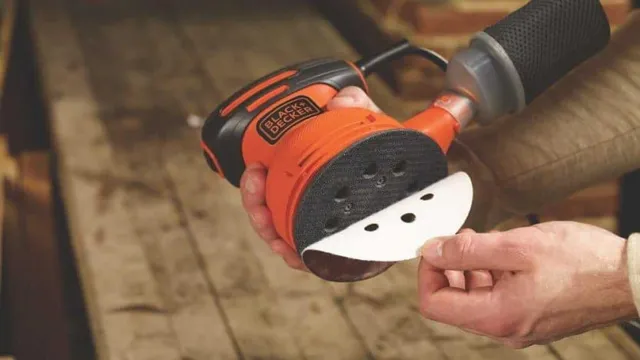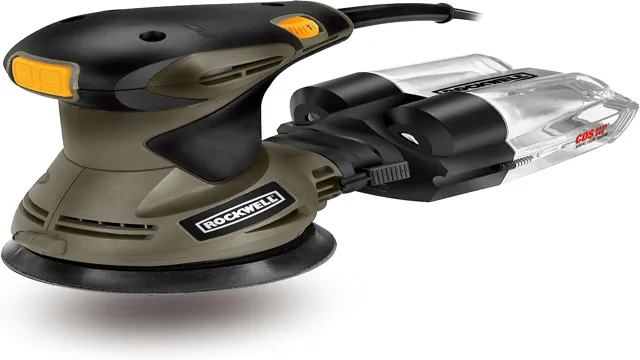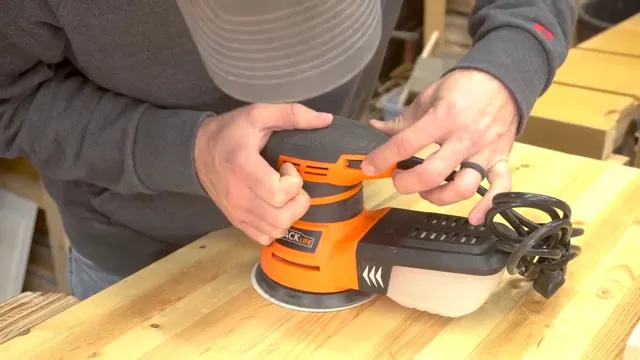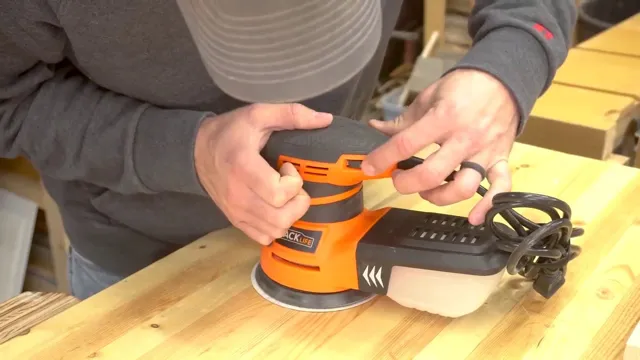How Much is an Orbital Sander? A Comprehensive Guide to Orbital Sander Prices
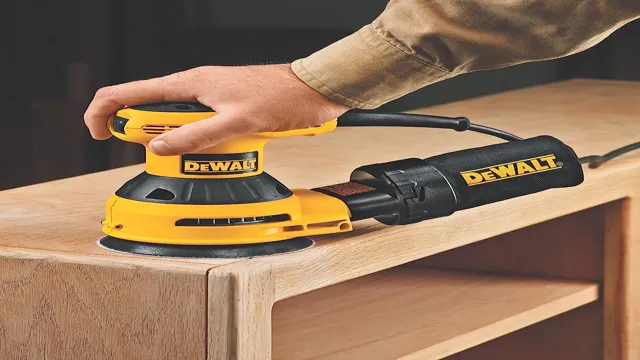
Orbital sanders are incredibly useful tools that can save you a lot of time and effort when working on home projects or DIY furniture upgrades. But, if you’re new to using orbital sanders, you might be wondering how much they cost. Well, the answer is that it depends on a few factors.
Firstly, the brand and quality of the orbital sander will greatly affect its price. Higher-end brands and models will generally cost more than budget options. Secondly, the size and type of the sander can also influence the cost.
A small, handheld orbital sander might be cheaper than a large, benchtop model. Generally, you can expect to pay anywhere from $30 to $300 for an orbital sander. A basic, budget-friendly option might cost around $30 to $50, while a more advanced model with additional features could cost upwards of $200 or $300.
Ultimately, the price you pay for an orbital sander will depend on your needs and budget. It’s a good idea to do some research and read reviews before purchasing to ensure you’re getting the best value for your money. So, whether you’re sanding down a table or smoothing out a wall, investing in a good quality orbital sander can make your job much easier and efficient.
Factors Affecting the Price of an Orbital Sander:
If you’re wondering how much an orbital sander costs, it depends on various factors. The price can range from $30 to $500, depending on the brand, size, and added features. Entry-level sanders are more affordable due to their smaller size and basic functions, while high-end ones come with advanced features like variable speed, large dust canisters, and a high-power motor.
The brand name also plays a significant role in the price; more established brands are known to have higher-priced products, but they also come with the assurance of quality and durability. Another factor that affects the price is the type of sandpaper compatible with the sander. Orbital sanders are designed to work with specific grits and types of sandpaper that vary in price.
Hence, it’s essential to factor in the cost of sandpapers when purchasing an orbital sander. Ultimately, consider your budget and the nature of your sanding projects when selecting an orbital sander.
Brand and Quality
When it comes to buying an orbital sander, many factors can affect its price. One of the most critical factors is the brand of the sander. Well-known brands with established reputations often charge a premium price for their products.
This is because customers trust the quality and reliability of these brands, making them willing to pay more for the assurance that they are buying a top-notch product. Another factor is the quality of the sander itself. Higher-quality sanders often come with better features and are made from more durable materials, making them more expensive.
However, the benefits often outweigh the extra cost as these sanders tend to last longer and require less maintenance. Other factors include the type of motor used, the type of sanding disk, and the size of the sander. All of these elements contribute to the cost of an orbital sander, making it essential to weigh these factors against your budget and needs when making a purchase.
With these insights in mind, you’ll be able to make a well-informed decision and choose the right orbital sander for your projects.
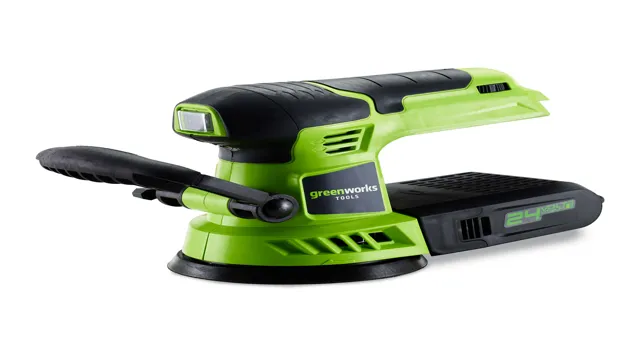
Type of Orbital Sander
When looking to purchase an orbital sander, there are a few factors that can affect the price of the tool. Firstly, the type of orbital sander you choose will play a big role in its cost. Random orbital sanders tend to be more expensive than their sheet orbital counterparts due to their ability to make smoother finishes and efficient sanding.
Additionally, the power source – corded or cordless – can also play a role in cost. Cordless sanders may be more costly upfront, but they offer the convenience of not needing to be tethered to an outlet and can save time in the long run. Other factors such as the size of the sanding pad, the level of power and speed, and the brand can all affect the price.
Ultimately, it is important to consider your specific needs and balance them with your budget to find the right orbital sander for you.
Size of the Sander’s Disc
When it comes to orbital sanders, the size of the sanding disc is an important factor that affects the price. Typically, the larger the disc size, the higher the price of the sander. This is because larger disc sizes tend to provide more coverage and efficiency, making them ideal for larger projects.
However, larger disc sizes also require more power and resources, which increase the manufacturing costs of the sander. On the other hand, smaller disc sizes are less expensive and easier to handle, making them suitable for smaller projects and beginners. When choosing the size of the sander’s disc, it is important to consider the nature of the project and the level of experience of the user.
Finding the right balance between size and cost can result in a powerful, yet affordable sander that can deliver excellent results.
Average Prices of Orbital Sanders:
If you’re in the market for an orbital sander but aren’t sure how much to budget, the average prices can vary depending on the features and brand you’re looking for. On the low end, a basic orbital sander can cost around $30 to $50. However, if you’re looking for a heavier-duty model with additional features such as variable speed settings, dust collection systems, or a more durable construction, you can expect to pay anywhere from $80 to $200.
Keep in mind that prices can also vary depending on the brand, with popular brands such as Bosch and DeWalt tending to be on the higher end of the spectrum. It’s important to assess your specific needs and budget before making a purchase, to ensure you get the right orbital sander for your projects without breaking the bank.
Budget-friendly Sanders (under $50)
If you’re on a budget and looking for an orbital sander that won’t break the bank, you’re in luck! While prices vary depending on the brand and model, the average cost of an orbital sander is around $50-$100. However, there are several budget-friendly options available for under $50. One such option is the BLACK+DECKER BDERO100 Orbit Sander, which is priced at around $30.
This lightweight and compact sander is perfect for small DIY projects and has a dust collection system to keep your workspace clean. Another great option is the TACKLIFE Orbital Sander, which is priced at around $40. This sander has six speeds and comes with 12 sandpapers for different surfaces.
Overall, there are several budget-friendly options available for orbital sanders, so you don’t have to compromise on quality for affordability.
Mid-range Sanders ($50 to $150)
When it comes to orbital sanders, the mid-range options will cost between $50 to $150. These sanders are a great choice for at-home DIY projects or for smaller professional jobs. With that said, the quality of the sander still matters, so it’s important to look for certain features.
For example, a dust collection system is crucial for ensuring a clean work area and prolonging the life of the sander. Additionally, variable speed settings are helpful for achieving the desired finish on different surfaces. The weight and grip of the sander are also important factors to consider, as you’ll want to ensure you can control the tool comfortably throughout your project.
In terms of durability, look for sanders with sealed switches and ball-bearing construction. These features will help ensure your sander lasts for many projects to come. So, while mid-range orbital sanders are an affordable option, be sure to look for these important features for optimal performance and longevity.
High-end Sanders (over $150)
When it comes to high-end sanders that cost over $150, you can expect exceptional performance and durability. The average prices of orbital sanders in this category range from $200 to $400 depending on the brand and features. These sanders are designed to tackle heavy-duty tasks such as sanding large surfaces, polishing metal, or removing rust and paint.
The advanced features of high-end sanders include variable speed control, dust collection systems, and ergonomic designs for comfortable use. Brands such as Makita, Festool, and Bosch are known for their high-quality orbital sanders that guarantee maximum efficiency and convenience. Investing in a high-end sander could save you time, money, and effort in the long run, especially if you work in the woodworking or automotive industry.
Just like a high-performance car, a high-end sander can take your work to the next level, leaving a smooth and flawless finish every time.
Conclusion:
In conclusion, asking “how much is an orbital sander?” is like asking how much happiness is worth. Sure, you could settle for a cheap, low-quality option, but it won’t provide the joy and satisfaction that a well-made, high-performing orbital sander can bring. So, invest in a good one and let the sanding commence, because happiness is priceless, and so is a good orbital sander.
“
Choosing the Right Orbital Sander for Your Needs
When it comes to choosing the right orbital sander for your needs, it’s important to consider the average prices of these tools. Typically, you can find a good quality orbital sander for around $50 to $100, with some high-end models costing up to $200 or more. While it may be tempting to opt for a cheaper option, it’s important to remember that investing in a higher quality model often means better performance and longer-lasting durability.
Additionally, some brands may come with exclusive features which may be worth the extra investment. Ultimately, it’s important to weigh your budget against the features and performance you need to find the best orbital sander for you.
Investing in Quality
It’s tempting to go for the cheapest option when shopping for an orbital sander. However, investing in a quality tool can make all the difference. It’s important to consider the average prices of orbital sanders when making a purchase.
While there are cheaper options available, they may not last as long or perform as well as a higher-end model. It’s important to assess your needs and durability requirements before making a final decision. By investing in a quality orbital sander, you’ll ensure that you have a tool that can handle any job and will last for years to come.
Ultimately, buying a cheaper model may save you money in the short term, but it could cost you more in the long run. So take the time to evaluate your options, consider the average prices of orbital sanders, and invest in a quality tool that will pay off in the end.
FAQs
What is an orbital sander and how does it work?
An orbital sander is a power tool used for sanding. It operates by vibrating in tiny circular motions, which helps to prevent swirl marks on the surface being sanded.
What are the different types of orbital sanders?
There are two main types of orbital sanders: random orbital sanders and orbital finishing sanders. Random orbital sanders are more versatile and can be used for a wide range of sanding tasks, while orbital finishing sanders are designed specifically for finishing and polishing tasks.
What is the difference between an orbital sander and a belt sander?
Belt sanders are more aggressive and are used for heavy-duty sanding tasks, while orbital sanders are better suited for light to medium sanding tasks. Belt sanders also have a larger sanding surface than orbital sanders.
How do I choose the right sandpaper for my orbital sander?
The grit of the sandpaper you use will depend on the type of wood you are sanding and the level of finish you want to achieve. For rough sanding, use a lower grit sandpaper, and for finishing, use a higher grit sandpaper.
How often should I change the sandpaper on my orbital sander?
It’s important to change the sandpaper frequently to ensure that it remains effective. How often you need to change the sandpaper will depend on the type of wood you are sanding and the level of finish you want to achieve.
Can an orbital sander be used for removing paint?
Yes, an orbital sander can be used for removing old paint, but it may take longer than using a paint scraper or chemical paint stripper.
How much should I expect to pay for an orbital sander?
The price of an orbital sander can vary depending on the brand, quality, and features. On average, you can expect to spend between $50 and $200 for a quality orbital sander.

